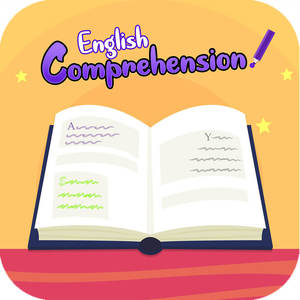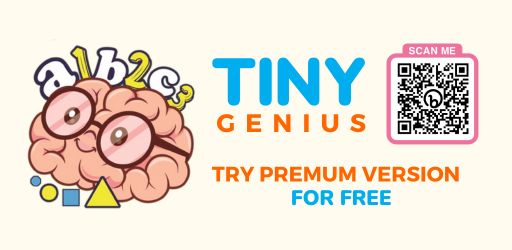Gamification in Elearning
Modern problems require modern solutions. Therefore, it is time to forget about conventional educational methods which do not fit the way of thinking of contemporary children.
Today, only lazy people do not speak about gamification or do not employ this method in practice. By 2020, the education gamification market is estimated to reach $1.5 billion. But what exactly does this phenomenon mean? Gamification is the application of game forms in non-game contexts, especially in the educational process. The advantages of this method are obvious - genuine student interest, involvement in the process, an increase of motivation, and energy.
The Functioning of the Game and Its Design
The structure and dynamics of a game must be relevant to the context it is embedded in. For example, a perfect game for school children is the one brightly designed, with lots of details and favorite cartoon characters. Still, the most important part of implementing gamification in elearning is selecting the mechanics it’ll be based on:
- Gaining. Collecting points or other trophies related to the topic is one of the most interesting things that keep a child engaged.
- Surprise and unexpected joy. Gamification always leaves room for creativity. It avoids assigning monotonous tasks and brings diversity to the process instead.
- Daily achievements. Completion of each level is the biggest driver of motivation. Moreover, a game encourages learners to take risks, explore and try new things. Indeed, the consequences of the error in a game are much lower than those in real life.
- Instant feedback. Passing levels enable the participants to immediately get an analysis of their results.
- Advance in status. Building positive self-esteem and respect for the rest of the students in the process of learning is one of the main goals of gamification. Downgrading a player's status generates additional motivation to compete and achieve higher results.
- Variety of modes. Gamification helps to find a personalized approach towards any child. Each learner can have a different type of player, as well as character and preferences. Moreover, it also works as one of the options for self-affirmation.
Learn by Playing: Why Is This Method Useful?
Game techniques have always been employed by teachers. Quizzes, riddles, discussions in class, final testing - these all are the elements of the game. Still, modern children often refuse to participate in such activities, considering them uninteresting and outdated.
The point is that traditional educational methods often ignore the simple but extremely important rule - learning must bring joy and positive emotions. Indeed, people, even grown-ups, tend to memorize information better if it is presented in the format of entertainment.
Satisfaction of the Crucial Needs
School-age is a decisive period in the overall development of a child. Indeed, school children are often extremely vulnerable and capricious. Therefore, the choice of the right approach to them becomes a real challenge for both parents and teachers. With gamification they can kill two birds with one stone - find ways to teach a child while entertaining.
A good game solves several children needs:
- The desire for independence. Most of the kids are acquainted with the interface of games and the principles by which the game is operated. Therefore, they are able to effectively complete games as the method is relevant to their natural environment.
- The desire for achieving results. It is crucial for children to feel their victory: “I understood and coped with it. I am a champion!”
- The desire for acknowledgment. Upon completion of the game, successful results can be shared with friends or other users.
Three Cornerstones of Gamification
Let us consider which features of gamification make the strategy outstanding and effective:
- Storytelling. Wrapping boring school material in an attractive covering - this is what makes gamification unique. The student discovers new planets and receives important information on each of them. Swallowing paragraphs of cold theory is definitely not for modern children.
- Fragmentation. Learning will not feel like climbing a high mountain if you divide the subject into mini-lessons. A perfect strategy is to group lessons - create levels of difficulty or thematic stages. An interactive map of the course at the beginning will clarify what kind of journey awaits a student.
- The spirit of competition. The assignments can be presented in the form of a marathon. Setting strict deadlines and creating competing teams will add some adrenaline. The rating of participants is necessary for a healthy competitive spirit. Supplementing the educational process with contests that advance the existing skills is also effective. It feels like entertainment, but in fact, it is a real practice.
Frequently Asked Questions
1. What is gamification in eLearning, and how does it enhance the learning experience?
Gamification in eLearning refers to the integration of game elements and mechanics into the learning experience to enhance learner engagement and motivation. It incorporates elements like points, badges, leaderboards, and rewards to make learning more interactive and enjoyable.
2. How can gamification be incorporated into eLearning courses, and what are some best practices for doing so?
To incorporate gamification into eLearning courses, instructors can use techniques such as storytelling, simulations, quizzes, challenges, and progress tracking. Best practices include aligning game mechanics with learning objectives, providing meaningful feedback, offering a balance of challenge and achievable goals, and fostering a sense of competition or collaboration.
3. What are the benefits of using gamification in eLearning, both for learners and instructors?
The benefits of using gamification in eLearning are numerous. For learners, it increases motivation, promotes active participation, boosts retention and recall of information, and enhances problem-solving and critical thinking skills. Instructors benefit from increased learner engagement, better knowledge retention, and the ability to track progress and assess performance more effectively.The benefits of using gamification in eLearning are numerous. For learners, it increases motivation, promotes active participation, boosts retention and recall of information, and enhances problem-solving and critical thinking skills. Instructors benefit from increased learner engagement, better knowledge retention, and the ability to track progress and assess performance more effectively.
4. What are some examples of successful gamification strategies that have been used in eLearning, and what makes them effective?
Successful gamification strategies in eLearning include branching scenarios, immersive simulations, leveled challenges, and narrative-driven experiences. What makes them effective is their ability to create a sense of achievement, provide immediate feedback, offer meaningful challenges, and make learning a fun and immersive experience.
5. Are there any potential drawbacks or limitations to using gamification in eLearning, and how can these be addressed?
There can be potential drawbacks to gamification in eLearning. It is important to strike a balance and ensure that the game elements do not overshadow the learning content. Over-gamification may lead to superficial learning or a focus solely on rewards rather than genuine understanding. To address these limitations, it is crucial to design gamified experiences that align with learning objectives, provide relevant and meaningful content, and offer intrinsic motivation for learning beyond the game elements.
Final Thoughts
The gamification of education helps to evoke an interest in learning in both children and adults. It is a universal method suitable for all ages.
Employment of gamification helps to motivate the children and fully engage them in the educational process, developing different mental habits. Through an array of game mechanisms, kids can quickly comprehend the topics and try themselves in competitions with peers.
There is no doubt that a tendency to use gamification will continue to spread as it is the most active learning style, from which it is impossible to get tired!

Improve your Child's Reading Comprehension Skills Through an App!
Reading Comprehension Fun Game helps parents and students improve reading skills and ability to answer questions. This English Reading Comprehension App has got the best stories for kids to read and answer related questions!









